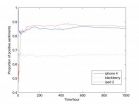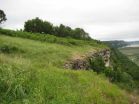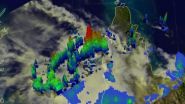(Press-News.org) A timid jumping spider uses the scent of ants as a secret weapon to save itself from becoming the somewhat soggy prey of the predatory spitting spider. The downside to this plan is that jumping spiders are also a favorite snack of its very own saviors. To overcome this additional hazard, the spider has made yet another plan in the form of an ant-proof nest, writes Ximena Nelson of the University of Canterbury in New Zealand and Robert Jackson of the University of Canterbury and the International Centre of Insect Physiology and Ecology in Kenya, in Springer's journal Behavioral Ecology and Sociobiology.
Associations in which a more vulnerable species gains protection by seeking out the company of a pugnacious protector species capable of deterring predators are more well-known among birds than among arachnids. Nelson and Jackson therefore carried out experimental work at the International Rice Research Institute in the Philippines to look at the dynamics between a type of jumping spider (Phintella piatensis), the territorial weaver ant (Oecophylla smaragdina) and a web-building predatory spitting spider (Scytodes sp).
The spitting spider can immobilize its prey by spitting on it from a distance. In the Philippines, it lives on the same large waxy leaves as the jumping spider. It normally spins its web right over the nest of the jumping spider, to make hunting just a little bit easier. However, the researchers found that a spitting spider does not come near a jumping spider when the latter positions its own nest near that of weaver ants. This is because the spitting spider is repelled by the specific airborne olfactory compounds that these ants release.
The researchers found that jumping spiders choose nesting sites based on whether they can see active living ants, if they detect ant odor or can see mounts made from dead weaver ants. However, it's not yet plain sailing for the jumping spider, as it is also a favorite snack of its savior, the weaver ant. Therefore jumping spiders build dense ant-proof nests of an unusually tough and dense weave that are difficult for the insects to tear open. The nest's hinged flaps of silk at each end function as swinging doors. The spider quickly raises these when it enters or leaves the nest, before any ants can follow, too.
"Nesting associations with territorial ants whereby the ant does not receive any benefit may be more common among arthropods than is currently appreciated," concludes Nelson. "We expect that a closer look at ant-other arthropod relationships will yield numerous examples similar to ours and provide a better understanding of the complexities of microhabitat choice and its ecological ramifications."
INFORMATION:
Reference: Nelson, X.J. & Jackson, R.R. (2014). Timid spider uses odor and visual cues to actively select protected nesting sites near ants, Behavioral Ecology and Sociobiology. DOI 10.1007/s00265-014-1690-2
The full-text article and a photo are available to journalists on request.
Timid jumping spider uses ant as bodyguard
Ants are the unlikely guardians of jumping spiders in their battle against aggressive spitting spiders
2014-03-11
ELSE PRESS RELEASES FROM THIS DATE:
Magnet hospitals have higher quality of care, NYU researcher finds
2014-03-11
Magnet recognition is considered a leading source for measuring organizational success in nursing. Magnet hospitals show higher job satisfaction and lower odds of patient mortality than non-Magnet hospitals. However, only nine percent of American hospitals are recognized as Magnet. Currently, there is little research into the causes of the differences between Magnet and non-Magnet hospitals, research that could create an infrastructure for positive change in nurse and patient outcomes.
Now research from New York University College of Nursing (NYUCN) and the University ...
Some galaxies in the early universe grew up quickly
2014-03-11
Pasadena, CA— Some galaxies grew up in a hurry. Most of the galaxies that have been observed from the early days of the universe were young and actively forming stars. Now, an international team of astronomers, including Carnegie's Eric Persson and Andy Monson, have discovered galaxies that were already mature and massive in the early days. Fifteen mature galaxies were found at a record-breaking average distance of 12 billion light years, when the universe was just 1.6 billion years old. Their existence at such an early time raises new questions about what forced them to ...
Why antisocial youths are less able to take the perspective of others
2014-03-11
This news release is available in German. Adolescents with antisocial personality disorder inflict serious physical and psychological harm on both themselves and others. However, little is yet known about the underlying neural processes. Researchers at the University of Leiden and the Max Planck Institute for Human Development have pinpointed a possible explanation: Their brain regions responsible for social information processing and impulse control are less developed.
The study focused on incarcerated delinquent adolescents from the Netherlands aged between 15 and ...
How Twitter shapes public opinion
2014-03-11
WASHINGTON D.C., March 11, 2014 -- How exactly does Twitter, with its 241 million users tweeting out 500 million messages daily, shape public opinion?
That question was tackled by a group of researchers in China who investigated how opinions evolve on Twitter by gathering about 6 million 140-character-or-less messages that were tweeted out over a six month period in the first half of 2011. They ran these messages through computer algorithms that sorted them by topic ("iPhone 4" or "blackberry," for instance), and they analyzed the underlying sentiments of the authors ...
Soil microbes shift as shrubs invade remnant hill prairies
2014-03-11
URBANA, Ill. – Perched high on the bluffs of the big river valleys in the Midwest are some of the last remnants of never-farmed prairie grasslands. These patches, edged by forest, are slowly being taken over by shrubs. A recent University of Illinois study examined the soil microbes on nine patches, also called "balds," that had varying degrees of shrub invasion and found an interesting shift in the composition of the microbial community.
"When we looked at the soil samples from a lightly encroached hill prairie remnant, it was very clear that there was a set of fungi ...
Tracking neighborhood eating habits to promote healthier diets
2014-03-11
Poor food choices, such as overconsumption of carbonated soft drinks, are an important factor driving the global obesity epidemic and have been linked directly to diabetes and heart disease. While public health agencies are working to help people to make healthier choices, monitoring the effectiveness of these efforts has been costly and difficult. But now, using the same digital data employed by marketers to promote food products, McGill University's David Buckeridge has developed a way for health agencies to track Montreal consumers' food choices, neighborhood by neighborhood. ...
NASA saw some power in Tropical Cyclone Gillian before making landfall
2014-03-11
VIDEO:
The TRMM Satellite's Precipitation Radar data was used to create this 3-D flyby over Tropical Cyclone Gillian on March 10. Some powerful storms within Gillian reached heights above 16 km/~9.9...
Click here for more information.
NASA's TRMM satellite saw some towering thunderstorms in Tropical Cyclone Gillian before it made landfall over the Western Cape York Peninsula of Queensland, Australia. Gillian has been staying over land since, and is now a remnant low pressure area. ...
Higher levels of CSF alpha-synuclein predict faster cognitive loss in Parkinson disease
2014-03-11
Philadelphia, PA, March 11, 2014 – The course of Parkinson disease (PD) can vary from gradual deterioration to precipitous decline in motor or cognitive function. Therefore identifying predictors of progression can benefit understanding of PD disease progression and impact management. Data from 304 PD patients followed for up to 8 years indicate that patients with higher cerebrospinal fluid (CSF) alpha-synuclein levels experienced faster cognitive decline in the following months, although no associations were found between alpha-synuclein levels and motor changes. The results ...
Cellular alchemy: Penn study shows how to make insulin-producing cells from gut cells
2014-03-11
PHILADELPHIA — Destruction of insulin-producing beta cells in the pancreas is at the heart of type 1 and type 2 diabetes. "We are looking for ways to make new beta cells for these patients to one day replace daily insulin injections," says Ben Stanger, MD, PhD, assistant professor of Medicine in the Division of Gastroenterology, Perelman School of Medicine at the University of Pennsylvania. Transplanting islet cells to restore normal blood sugar levels in patients with severe type 1 diabetes is one approach to treating the disease, and using stem cells to create beta cells ...
Gesturing with hands is a powerful tool for children's math learning
2014-03-11
Children who use their hands to gesture during a math lesson gain a deep understanding of the problems they are taught, according to new research from University of Chicago's Department of Psychology.
Previous research has found that gestures can help children learn. This study in particular was designed to answer whether abstract gesture can support generalization beyond a particular problem and whether abstract gesture is a more effective teaching tool than concrete action.
"We found that acting gave children a relatively shallow understanding of a novel math concept, ...
LAST 30 PRESS RELEASES:
LLMs choose friends and colleagues like people
Gas stoves and nitrogen dioxide exposure
Beauty linked with metabolic costs of perceiving images
First Nations Australians twice as likely to be digitally excluded: report
Korea University study finds restless legs syndrome linked to Parkinson’s risk—dopamine treatment may be protective
Pusan National University researchers use AI to create optimized engine components that outperform human designs
Approximate domain unlearning: Enabling safer and more controllable vision-language models
Moths detect bat attack signals: Ultrasonic pulse rates drive distinct escape responses
Intimate partner violence injury patterns linked with suicidal behavior
Blood test shows obesity speeds Alzheimer’s development
New study supports the value of medical humanities in illuminating the root causes of health care disparities in Washington, DC
Uncovering the principle by which DNA replication initiation sites are determined in the human genome
Urban sprawl could deny 220 million people access to clean water by 2050
Researchers unveil first high-resolution maps of China's forest diversity patterns
Sun-watcher SOHO celebrates thirty years
Largest study of nose microbiome helps highlight those at risk of staph aureus infection
Structural racism and cultural misunderstanding compound grief for Black British and Black Caribbean communities, study finds
Water molecules in motion: Surprising dynamics on 2D materials
Alaknanda: JWST discovers massive grand-design spiral galaxy from the universe's infancy
Our brains recognise the voices of our primate cousins
Does the "use it or lose it" principle determine brain plasticity and shape how we age?
Dynamic duo of bacteria could change Mars dust into versatile building material for first human colonists
Lower prevalence of PSC among patients with IBD in Asia: Insights from a multinational study
Alcohol and ultrasonic irradiation: An effective CCl₄ decomposition tag team
Conquer the diseases of aging and humans could live far longer than we think, scientists propose
National study finds where you live influences your body weight
What your sweat can reveal about your health
Groundbreaking research compares prompt styles and LLMs for structured data generation - Unveiling key trade-offs for real-world AI applications
Beat the bugs, enjoy the beats
Genome advancement puts better Wagyu marbling on the menu
[Press-News.org] Timid jumping spider uses ant as bodyguardAnts are the unlikely guardians of jumping spiders in their battle against aggressive spitting spiders





